Perseid Meteor Shower 2023: When is it? How can I see it?
- Published
- comments
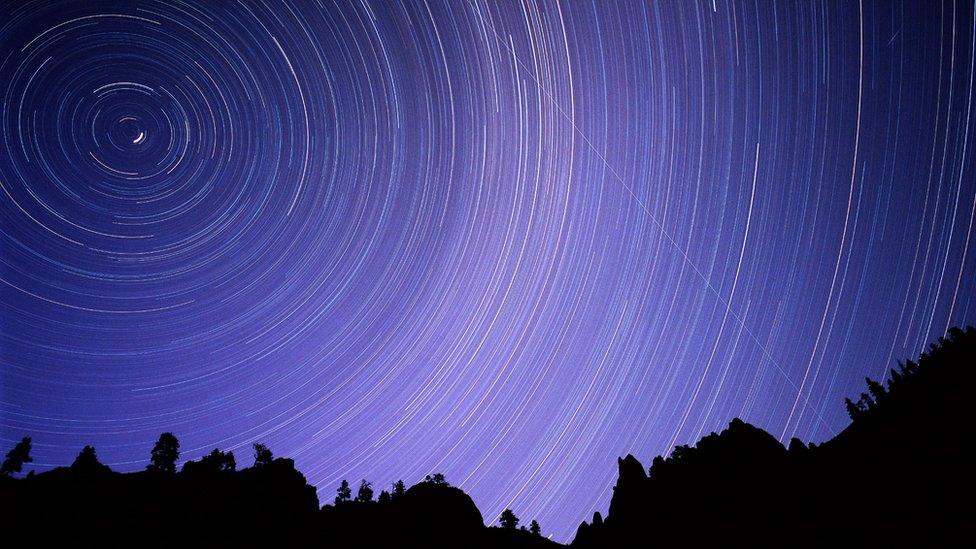
This time exposure photograph shows a series of polar stars during a meteor shower
Stargazers of the UK, it's time for the main meteor shower of the year - the annual Perseids Meteor Shower!
Of all the meteor showers that take place the Perseids are the most famous, and are widely seen as the most spectacular, too.
The shower takes place over a period of a few weeks in the summer. In 2023 it started on 17 July and will remain visible until 24 August.
According to Nasa, during the peak it's possible to see up to 100 shooting stars an hour!
Find out more about the Perseids below and don't forget to let us know in the comments if you're planning on watching the meteor shower!
What is the Perseid Meteor Shower?
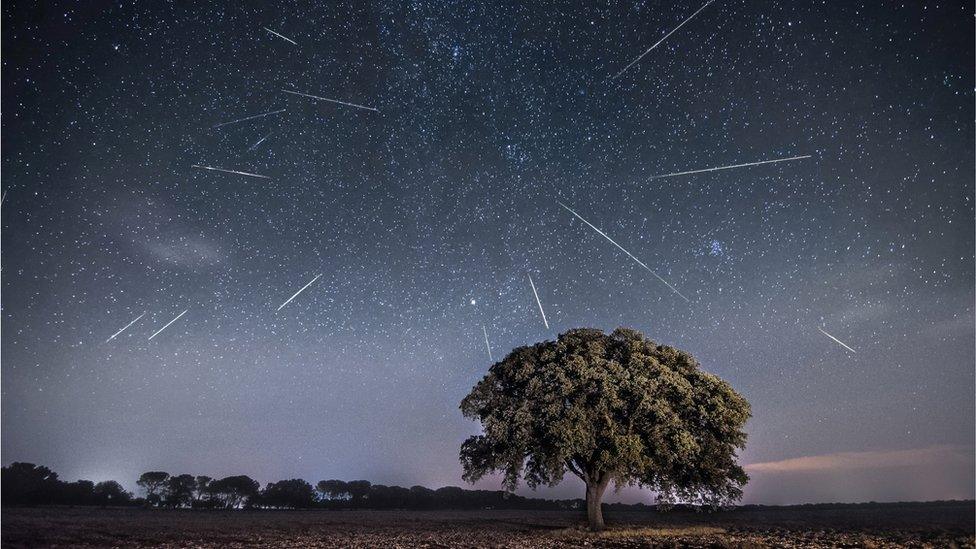
Meteors can appear in any part of the sky so the more of the night sky you can see, the better
The Perseid Meteor Shower starts in July. It is made up of hundreds of meteors streaking across the sky in a beautiful natural firework show, which is visible around the world.
The meteors hit the Earth's atmosphere at a whopping speed of 134,000 mph, but don't pose any danger to us on Earth.
The Perseids - pronounced 'Per-see-ids' - are actually tiny pieces of the Swift-Tuttle comet that can be seen every year when the Earth passes through a cloud of the comet's debris.
The average speed for a Perseid meteor is 36 miles per SECOND!
The pieces of ice and dust which make up the shower can be as small as a grain of sand or as big as a pea.
They were left behind when Swift-Tuttle passed close to Earth - the last time being in 1992.
When can I see this year's Perseids?
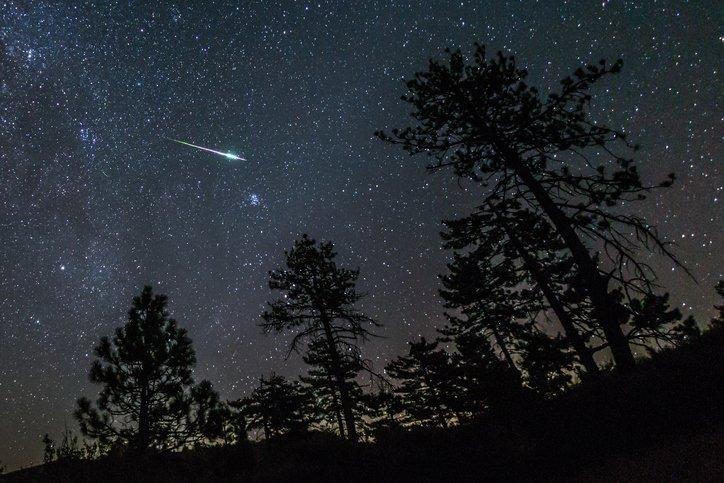
The best time to see the Perseids is when the sky is at its darkest
The peak nights usually fall in mid-August, with the best night for viewing this year's Perseids expected to fall on the night of 12 and 13 August.
However, the Royal Observatory in Greenwich says the shower may be visible between 17 July and 24 August.
Prime viewing for the Perseids will be in the middle of the night - between midnight and the early hours of the morning - so not one for those who like a good night's sleep!
Last year the peak fell around the time of the full Moon, so the light conditions meant it was harder to see some of the fainter meteors.
Why is it called the Perseid Meteor Shower?

The Perseid meteor shower produces bright meteors and is one of the most active!
Meteors that form part of the same shower have similar orbits and appear to come from the same place in the sky. This place is called the 'radiant'.
They are named based on the location of their radiant.
For the Perseids, the radiant is within the constellation Perseus - and so that's where it gets its name 'Perseid' from.
How can I see the Perseid meteor shower?
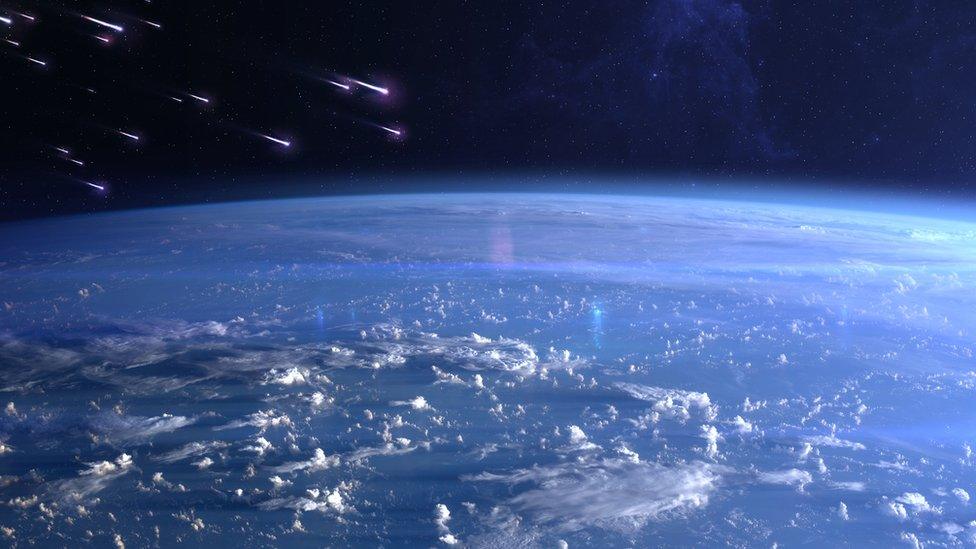
It is called the Perseids because the meteors originate from the constellation of Perseus
The great thing about the Perseids is that unlike some other cosmic events, you don't need any special technology to watch them.
The Nasa website says: "Note that telescopes or binoculars are not recommended!"
It's best to find a wide open space away from tall buildings or trees, and with as little light as possible.
The more of the sky you can see, the better.
Meteors can generally be seen all over the sky so don't worry about looking in any particular direction.
It's important to let your eyes adjust to the dark too, which can take up to 30 minutes.
Make sure you're not playing on your phone while you're out, as the bright light from your screen could affect how your night vision has adjusted to the dark.
- Published18 September 2021
- Published28 December 2021
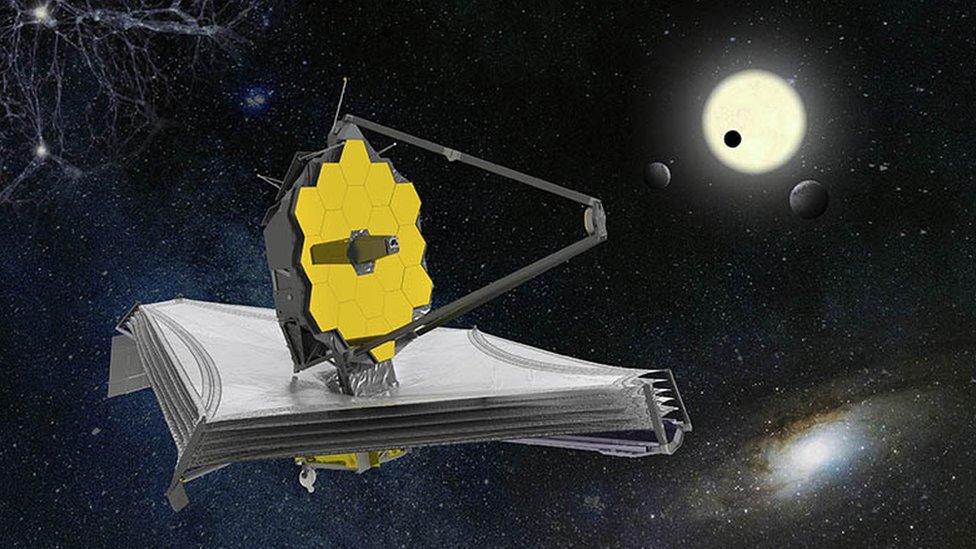
- Published14 September 2021

